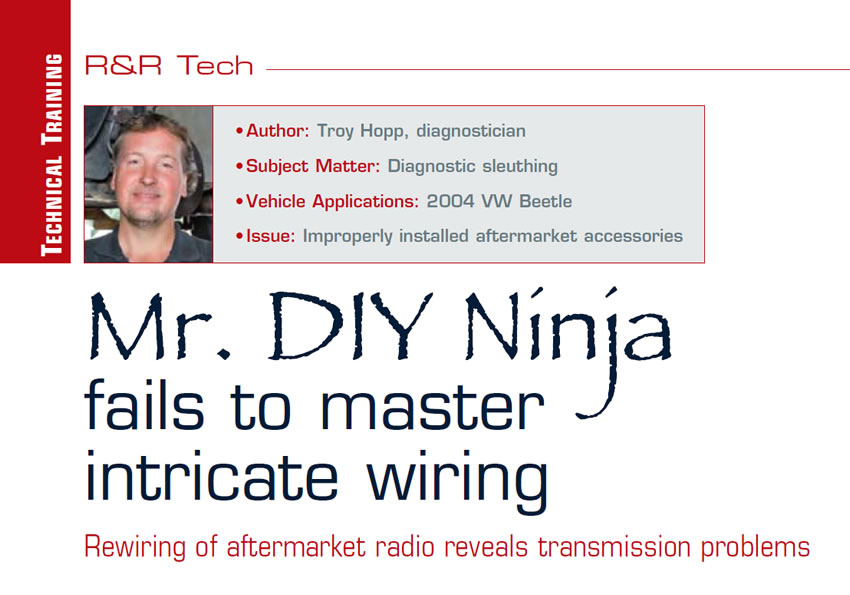Programming Isn’t Cheap
A few months ago I wrote an article about Diesel tuners in reference to keeping the software updated and some of the issues that can arise if they aren’t. This go around I will touch on something similar but different at the same time: vehicles that have third-party programming installed, but there is no tuner that you can hold onto or plug in and update. This is hardware that has the ability to pull the factory calibration from the ECM/TCM in order to be edited, and then flashed back into the ECM/TCM. HP Tuners and EFI Live are the “big two” so to speak, and there are a few up-and-comers entering the market, but for the most part these are the brands that are the most widely used and can give us some headaches.

Diagnosing Electrical Signals
I’ve always had been fascinated by technology and electronics, and I can remember the first time I used a scope. It was in my high school auto-tech class, and we were being intro-duced to ignition waveforms using a Sun Engine Analyzer. I pulled my 1968 Barracuda up to this huge machine with all kinds of leads coming off of this big arm that hung over the engine bay, and everyone in the class was overwhelmed by what was going on. It was amaz-ing to me that my teacher could tell that my points (anyone remember points?) weren’t gapped properly and that I had a bad plug or wire on #3 cylinder simply by looking at the electrical signal on the scope.
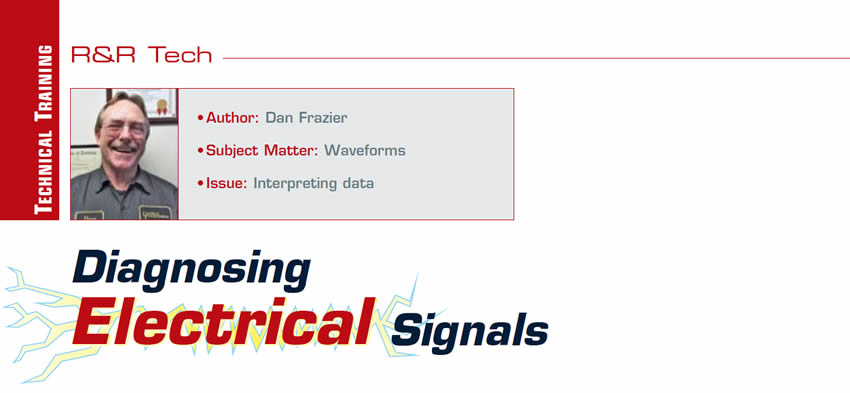
Misinformation forces tech to work harder
As with most of the accounts we’ve shared detailing vehicle symptoms and repairs, electrical issues seem to be the most common root cause. Our subject today involves a 2003 Dodge Sprinter 2500 that showed up at our door with the customer informing us that they could not shut it off since it would not restart without jumping the solenoid on the starter. The gentleman stated it would not start with the key, the shifter would not come out of park and the transmission would not shift. He also stated that we had installed a TCM about a year ago, and because it did not shift, the customer thought it was related to what we had done. He also stated he had replaced the fuse in the fuse panel for the transmission and that didn’t help. Apparently, we needed to diagnose some electrical problems.

When TCM gets cold feet
A couple months ago we had a customer contact us about a problem that he was having with his 2000 Nissan Frontier 4wd Pickup. While he had some trouble explaining the exact symptoms that were occurring, we understood that the problem only seemed to happen when it was driven first thing in the morning, and that in simple terms, “it just didn’t want to go.” We arranged an appointment for him to drop off the vehicle with us so we could perform our initial diagnosis and evaluation after the vehicle sat outside overnight.
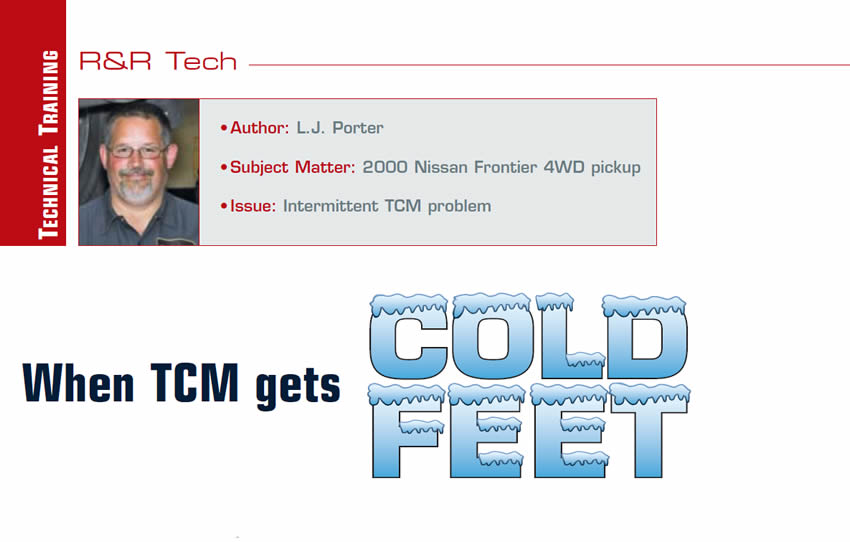
Tuner-Update Software Easily Found Online
We all know how important it is to make sure the vehicles that come into your shop have the latest software loaded into the vehicle’s computer systems. No matter the make or model, they almost all have some kind of updated calibration that the OE decided was important enough for them to get the calibration approved and released, whether it be for drivability, fuel mileage, durability or just a software bug.
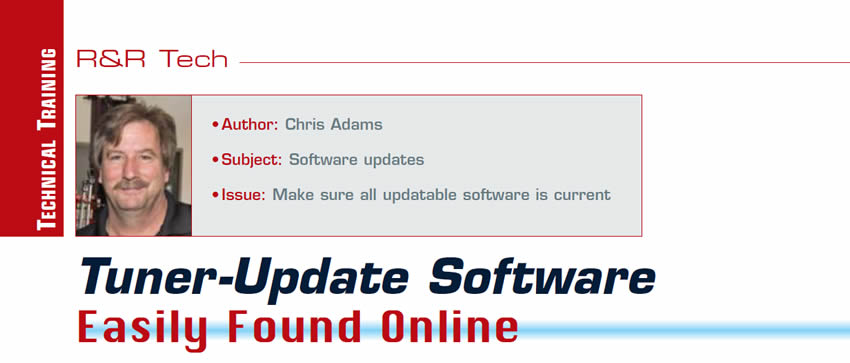
Diagnosing Shifting Issues
One of the best and easiest tools that I use almost daily for diagnosing transmission problems is Passbook or application-chart information. When I have a shifting issue, a review of what solenoids and friction elements are applied in each gear can let me see what areas of the transmission the problem may be caused by, so I can then differentiate whether there is an electrical or mechanical issue causing the symptoms.
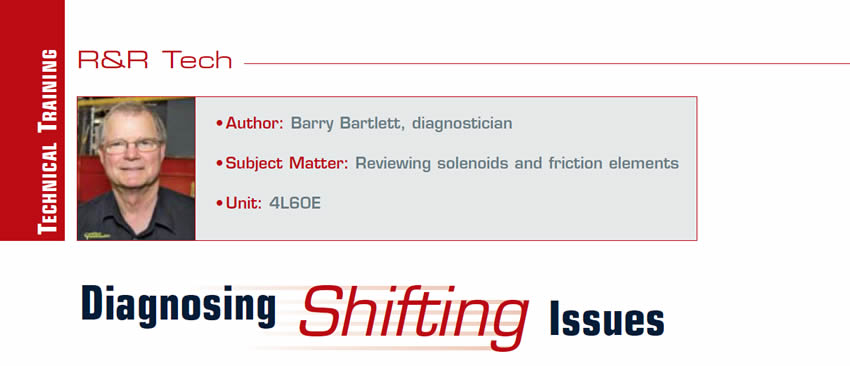
If You See Something that Looks Wrong, it Very Well May Be
The subject of this article is a 2006 Hyundai Sonata that came into our shop with a no-shift complaint. It was likely in limp-in mode, so in order to get down to the cause of the problem I began with a cursory preliminary inspection.
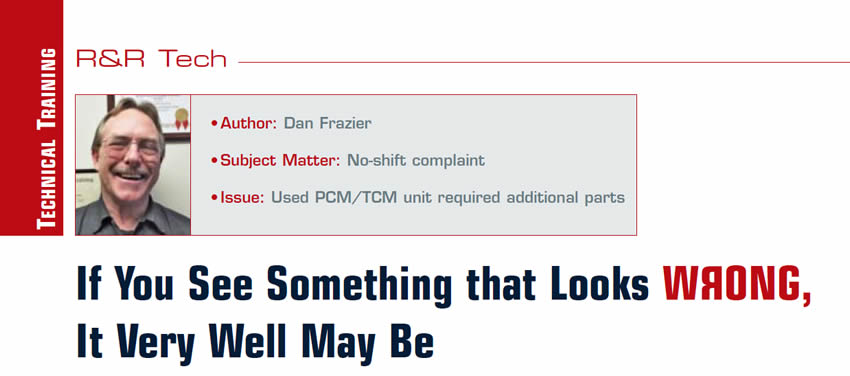
As a Tech, You Must Detect
Occasionally you will have a vehicle come into your shop that takes you down a different path than what you might have expected. The following account tells the story of one of the times that it happened to me. The star of this show is a 2006 Chevrolet Silverado 2500 4×4, equipped with a Duramax diesel engine and an Allison 1000 transmission.
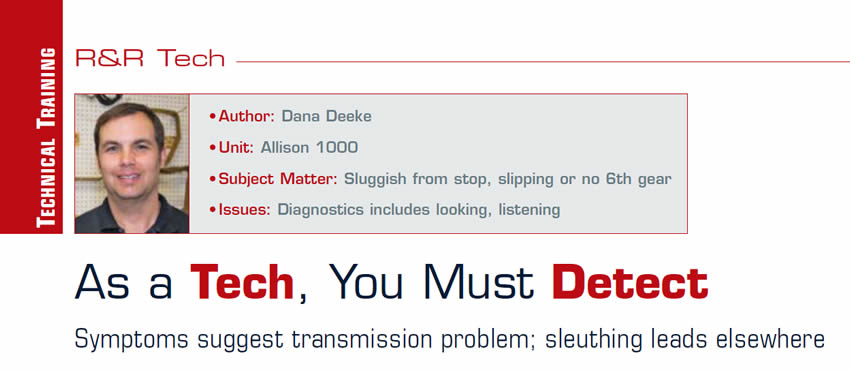
Problem or Process?: Surge may be byproduct of ‘displacement on demand’
Recently a 2006 Chevrolet Impala came into one of our retail locations with a surge complaint while cruising on the highway between 60-65 mph. I drove the vehicle with the customer to verify the concern and was able to duplicate the circumstances in which the vehicle acted up. While watching the tachometer I noted that there was a noticeable 150-200 rpm surge while TCC was applied. It felt like a typical TCC surge as a result from a leak in the TCC regulator circuit, so additional diagnostic steps were in order. We discussed this with the customer, and he authorized the additional time. At this point I was fairly convinced that we were going to need to go inside the unit.
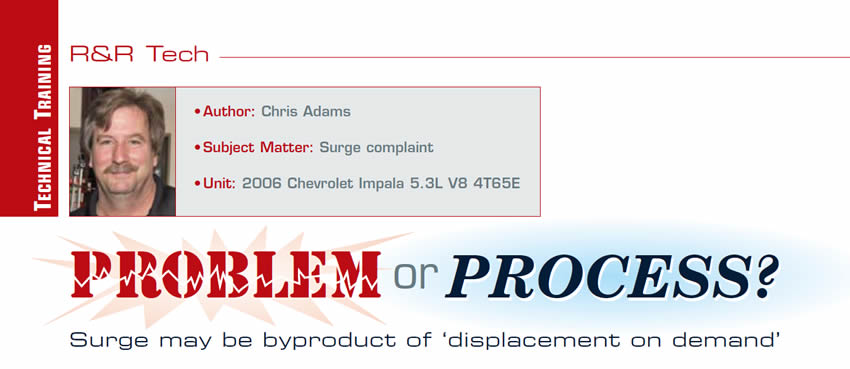
When system failures interact
By now, everyone in the automotive industry should be aware of the infamous Nissan radiator issues that cause antifreeze to contaminate the transmission oil (and vice versa). If you’re not, you should research the topic as the implications are many. This issue isn’t as easy to detect as it was several years ago. Today’s transmission fluid doesn’t always tend to froth up into the “pink milkshake” that was always a telltale sign of contamination. Small amounts of glycol can wreak havoc on the transmission, and many times a test kit is required to detect it. I know this is nothing new, but perhaps a refresher with a few new things that you may have not previously considered. The vehicles I will be referencing will be a 2005 Nissan Pathfinder 4×4 and a 2007 Nissan Pathfinder that had related issues all within the last six months.
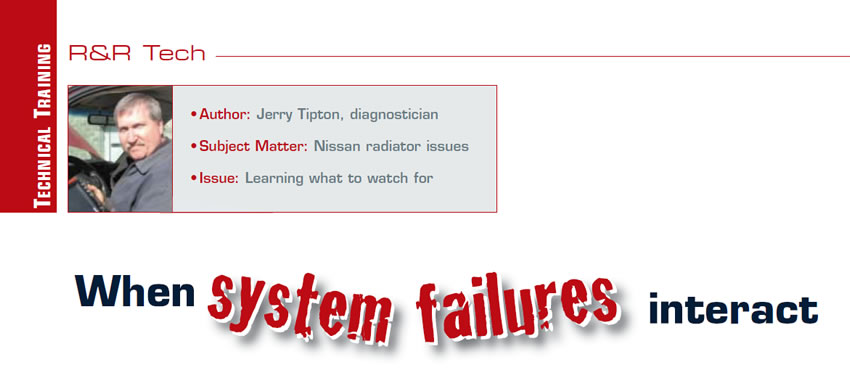
Magic Boxes and Basic Wiring
However, one thing that has remained fairly constant through the years is the wiring that connects to all of those “magic boxes.” Copper wires in a vinyl sheath; seems simple enough. Where it gets a little complicated is with CAN network protocols, module connectivity and the like. It’s easy to suspect these things when diagnosing a customer issue, and just as easy to forget the basics. The following cases involve the latter: basic wiring issues creating a customer complaint.
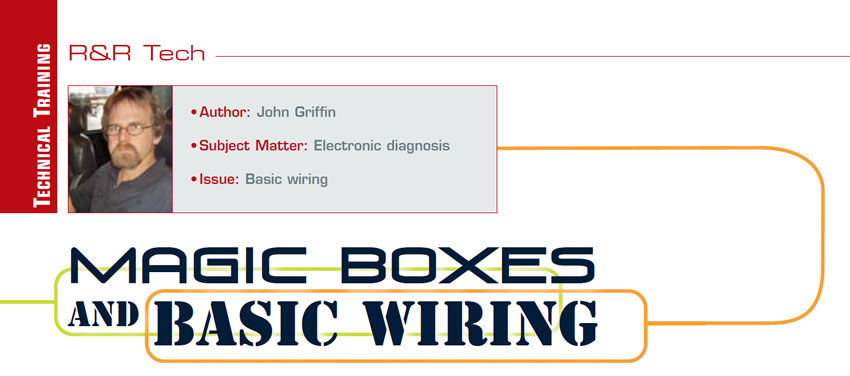
Mr. DIY Ninja fails to master intricate wiring
One typical Tuesday a customer brought his 09G-equipped 2004 VW Beetle into our shop early in the morning. He stated that his 6 speed automatic transmission “… jerks on downshifts when warm, and the engine revs up on upshifts while driving on the highway. It also slams into gear on occasion.” Sounds like a fun one, so I prepared to duplicate, verify, and diagnose the issue.
